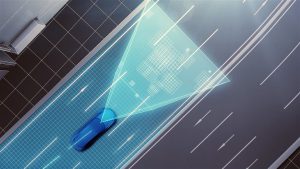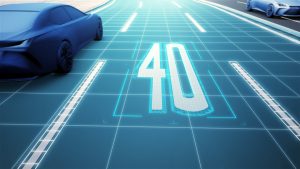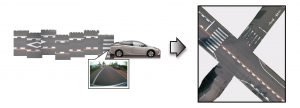Toyota to Present New Map Generation Technology at the 2016 Consumer Electronics Show
New system will support safe implementation of automated driving systems
Toyota is developing a system for generating high-precision maps that will help the safe introduction of automated driving. The technology, which uses data from on-board cameras and GPS devices, is being displayed at the 2016 Consumer Electronics Show in Las Vegas in the New Year (6 to 9 January).
The new system uses production vehicles equipped with cameras to gather road images and vehicle position information. This information is sent to data centres where it is automatically pieced together, corrected and updated to create highly accurate maps that cover a wide area.
It is essential to have an accurate understanding of road layouts and traffic restrictions and rules (including speed limits and signage) in order for automated driving technologies to be successfully introduced. Also, precise measurement of vehicle positional data requires the collection of information on dividing lines, kerbs and other road features.
Until now, this kind of intelligence has been obtained using specially built vehicles equipped with 3D laser scanners. These are driven through towns and on main roads, and the data collected is manually edited to add information on highway features (kerbs, divides, signage etc). Because data collection is infrequent, the maps are not updated regularly, limiting their usefulness. This is also a cost-intensive process.
Toyota’s new system uses automated, cloud-based spatial information generation technology, developed by Toyota Central R&D Labs, to generate high-precision road image data from the databanks and GPS devices used by the designated vehicles.
There is a higher risk of error with a system that relies on cameras and GPS in this way, compared to one which uses 3D laser scanners, but positional errors can be mitigated by using image matching technologies that integrate and correct the road image data from multiple vehicles, as well as high-precision trajectory estimation technologies. This restricts the margin of error on straight roads to a maximum 5cm. By using production vehicles and existing infrastructure to collect information, this data can be updated in real time. It can also be implemented and scaled up at relatively low cost.
Toyota plans to include this system as a core element in the automated driving systems that will be available in production vehicles by around 2020. While initial use is expected to be limited to motorways, future development goals will include expanding functionality to cover ordinary routes and help with hazard avoidance. Toyota will look to work with map-makers with the goal of encouraging the use of high-precision map data in services offered to both public and private sectors.
In October this year, Toyota introduced the Mobility Teammate Concept, part of the company’s approach to developing automated driving technologies while keeping an element of enjoyment at the heart of the driving the experience. To that end, the concept envisages a driver – car relationship based on a shared purpose, rather like good friends who look out for each other and help each other out.





